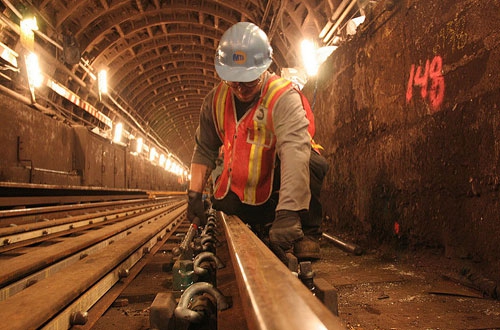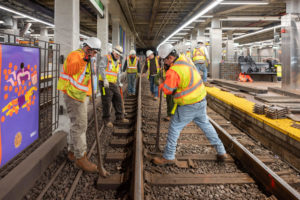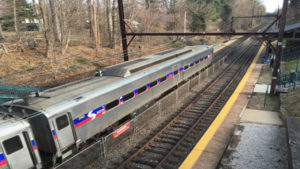MTA unveils bold plan to modernize New York City subway
Written by Stuart Chirls, senior editor, Railway Age
New York's Metropolitan Transportation Authority unveiled a comprehensive plan to rapidly modernize the world's busiest subway system.
The plan, to be implemented immediately, will also separate the top leadership positions of chairman and chief executive while addressing the root causes of delays and disruptions that undermine service reliability.
The agency will accelerate delivery of hundreds of new cars, install continuous welded rail and implement extensive operational changes and preventative maintenance throughout the system while focusing on notorious system trouble spots.
After “decades of underinvestment” that has left the century-old system “excessively vulnerable to failures,” the MTA said the new initiative is targeting short-term service improvements, and complements its record $29.5-billion Capital Plan which includes more than $14 billion for New York City Transit.
The separation of chairman and chief executive will strengthen leadership following the recent appointments of Chief Development Officer Janno Lieber and Chief Operating Officer Phil Eng. The MTA Search Committee will direct the recruitment for the Chairman and CEO roles. MTA Interim Executive Director Veronique “Ronnie” Hakim has served in the dual roles since Thomas Predergast retired at the end of 2016.
“Increasing delays are simply unacceptable which is why we have to commit to addressing the immediate problems with all the tools at our disposal,” said Hakim. “We are implementing long-term capital improvements. But we also need a comprehensive approach that focuses on reducing the system’s failures while our capital investment is underway. Attacking the five key causes of subway delays enables New York City Transit to take a targeted approach that can produce results.” Those causes are track and signal issues; sick passengers and police activity; subway car equipment failures; loading and unloading in stations and bottlenecks that occur at critical points in the system where lines merge.
The first phase of the initiative will begin immediately on the Eighth Avenue corridor from 125th Street to Fulton Street, a total of 19 stations on the A,C,E lines; and at two key hubs in the South Bronx, 149th Street-Grand Concourse and Third Avenue-138th Street. MTA said there are an average of seven major incidents per month, delaying 50 or more trains, on the Eighth Avenue corridor.
The agency will roll out the plan in phases across the line over the next six months, introducing some aspects of the plan to other lines later.
The agency is expediting the delivery of 300 new R179 subway cars with the first arriving this fall and all being delivered by September 2018. It will also speed up the delivery of 450 new R211 cars, including an expansion of the pending portion of the order for the “standard configuration” R211 cars.
The MTA plans a top-to-bottom revamping of its car maintenance procedures and will seek the direct involvement of the original manufacturers in new maintenance. The agency will add inspectors and resources to ensure every car receives pre-service inspection before leaving a yard, to reduce the likelihood of a mid-trip failure. Key components will be proactively replaced on a regular schedule before they fail. This new component replacement initiative will initially focus on doors, heating and air conditioning, and master controllers, which historically have been the source of the most frequent failures.
The MTA is doubling its ultrasonic testing from once a month to twice monthly to detect track defects, make repairs and prevent recurrence.
Rapid response teams will be deployed near the busiest stations to address track and signal issues, with additional emergency-dispatched repair vehicles and trained staff to get repair crews where they are needed, faster. “These will be expanded to include additional specialists with access to more parts and resources to enable more rapid repairs of all aspects of the subway’s tracks and signal systems,” the agency said. The MTA is focused on reducing average response time of its emergency crews to 15 minutes or less, to restore service faster.
At track level, the MTA plans to install a total of 3,000 feet of continuous welded rail to cover the entire Eighth Avenue corridor by September 2017.
Two of what the MTA calls first-of-its-kind portable transit vacuums will be deployed on the corridor, to remove trash and prevent fires. The MTA has ordered more units to enable a system-wide expansion.
The initiative will deploy EMTs at five corridor stations to aid sick passengers, and the agency is working with NYPD to increase the presence of law enforcement at the same stations. The MTA is also testing strategies to improve passenger loading and unloading.
With more trains and increased ridership, more managers and technology will be added to move trains quickly through hub merge points, to avoid delays.





